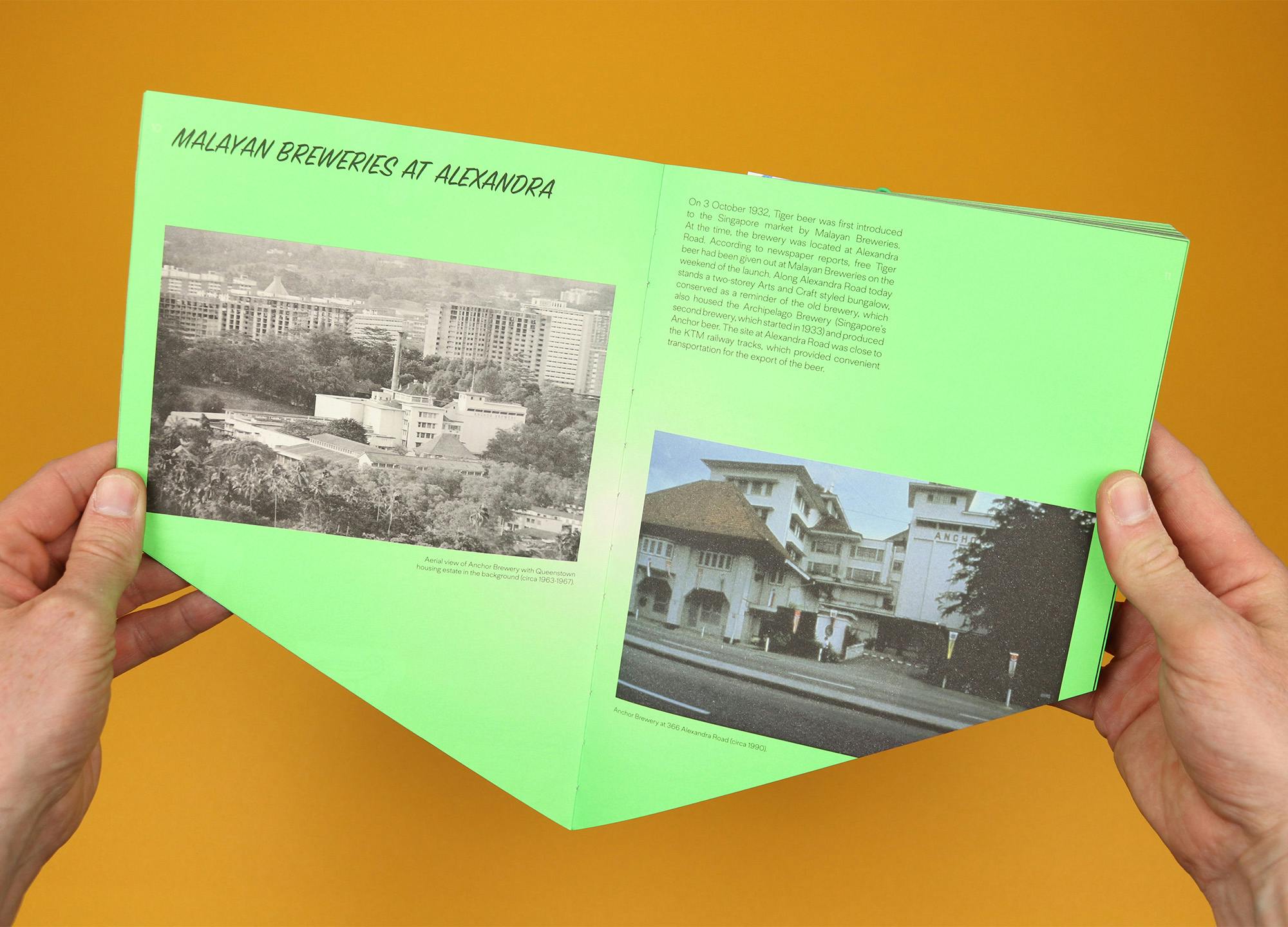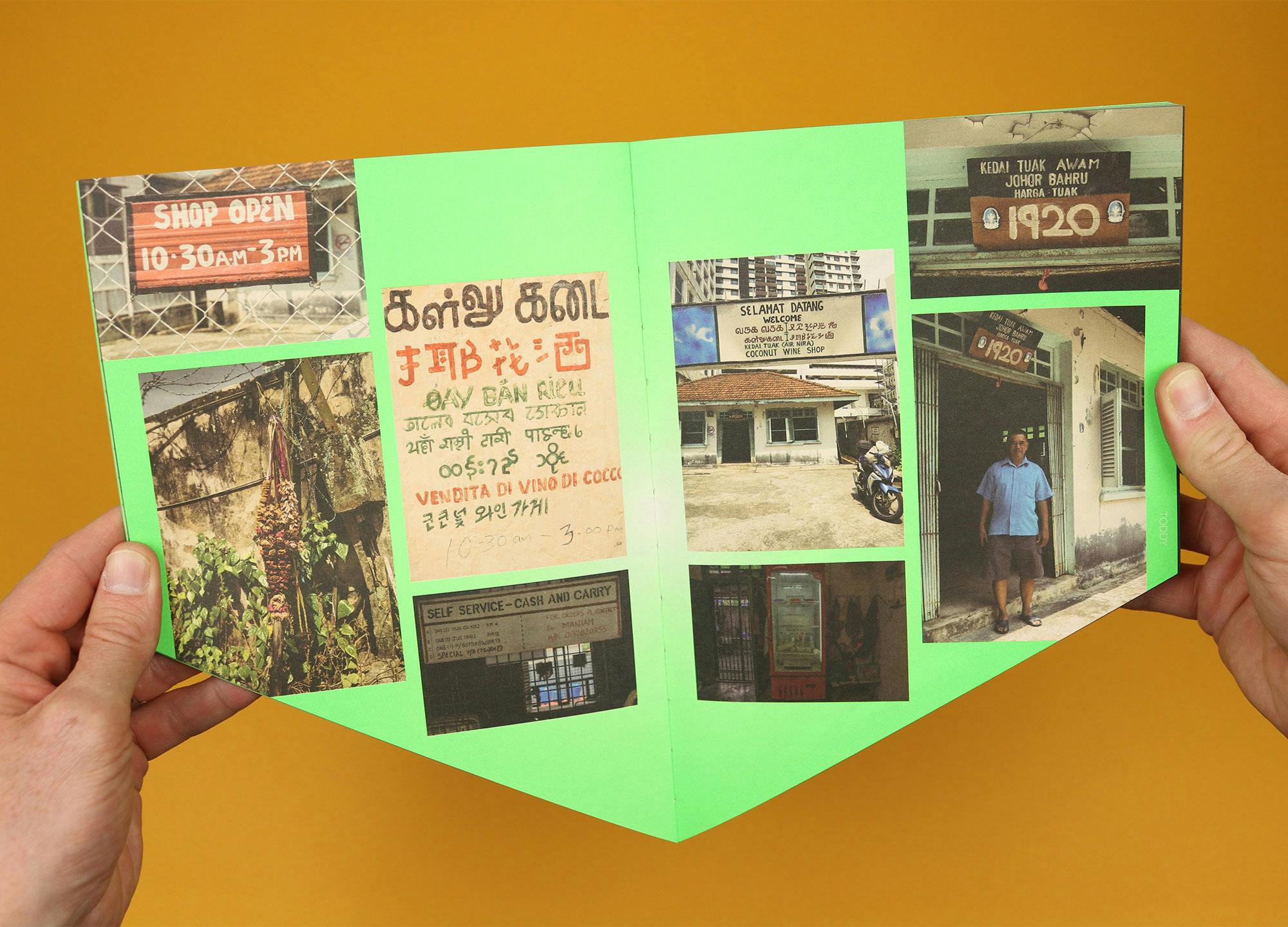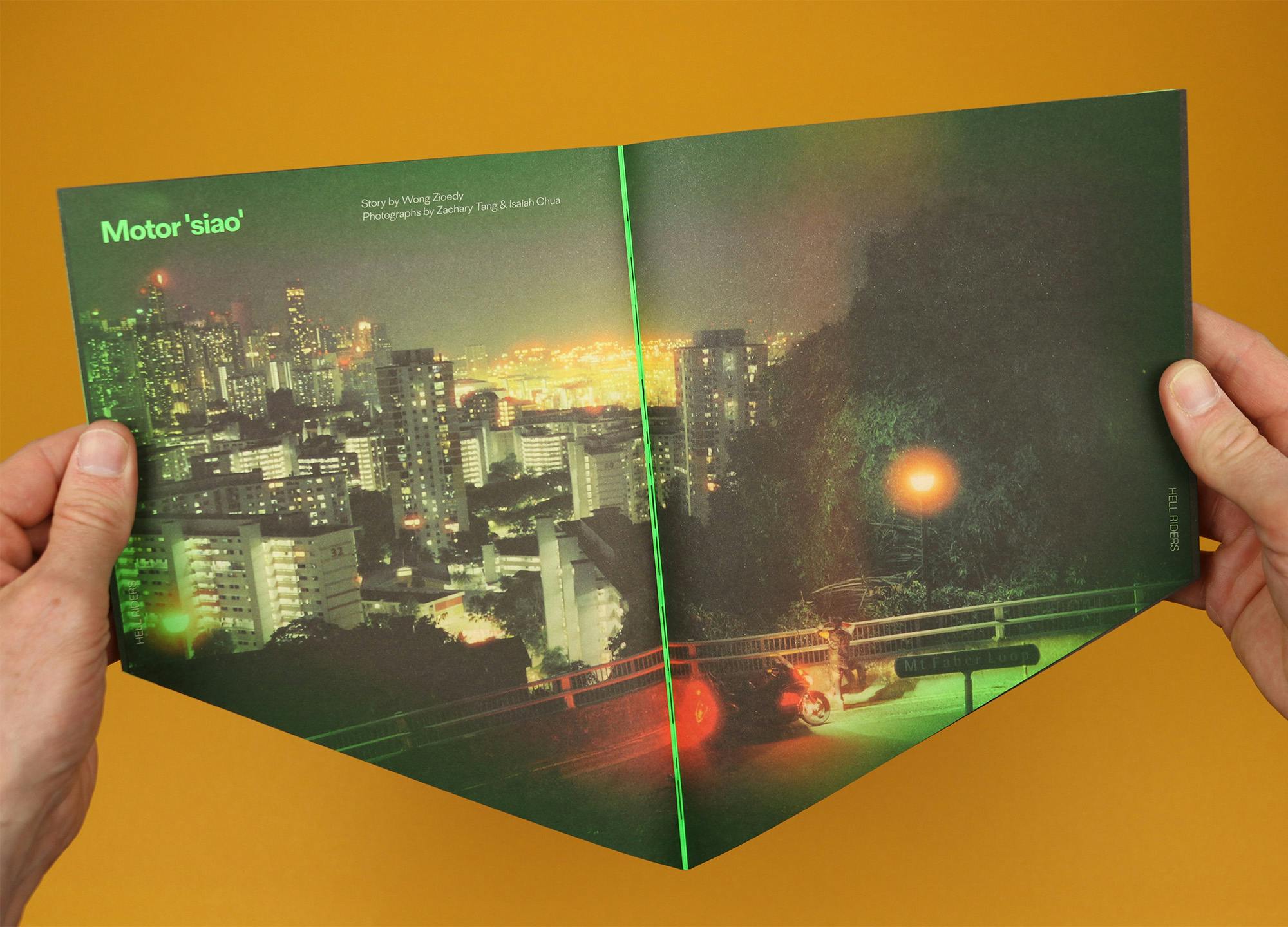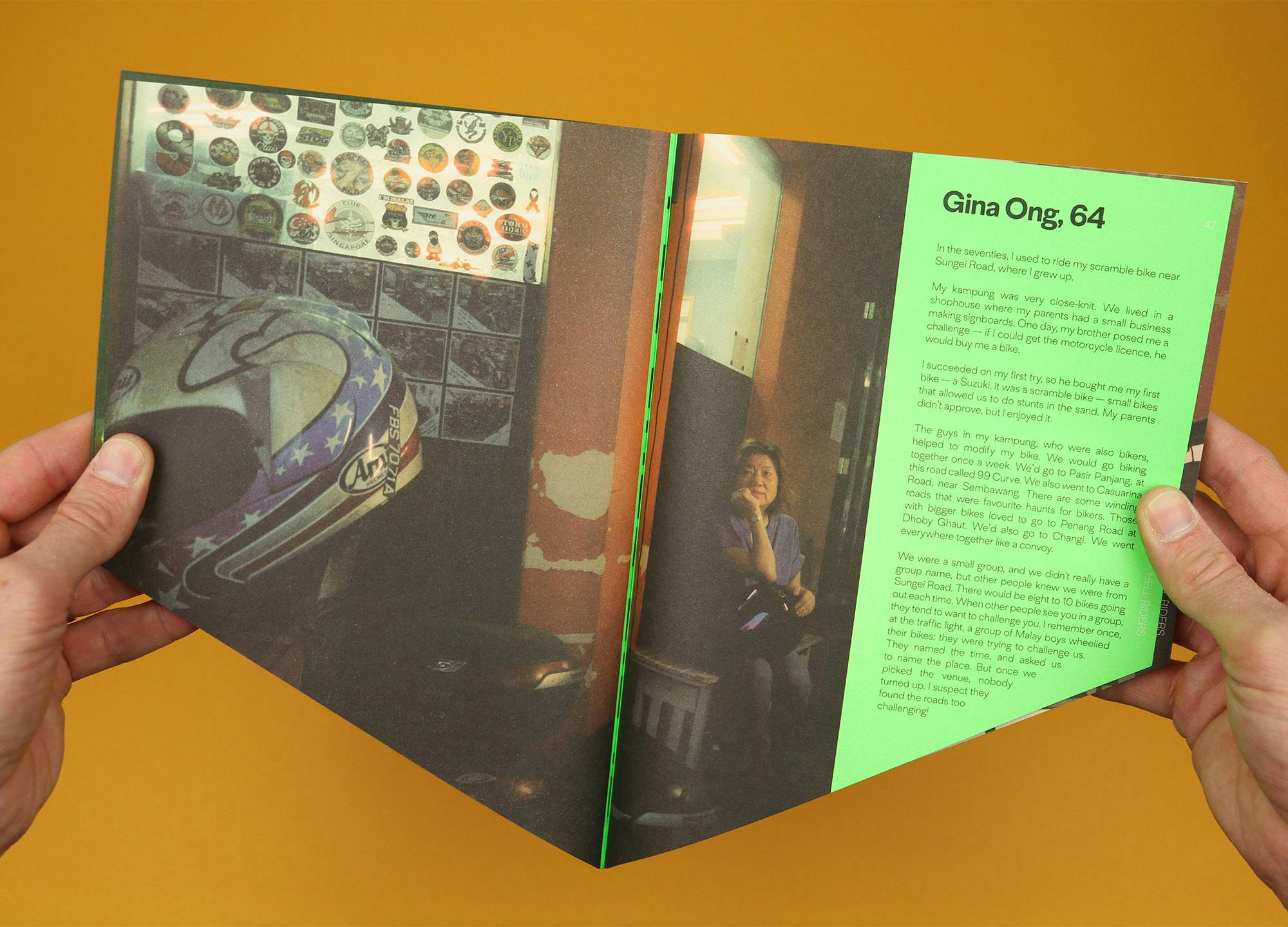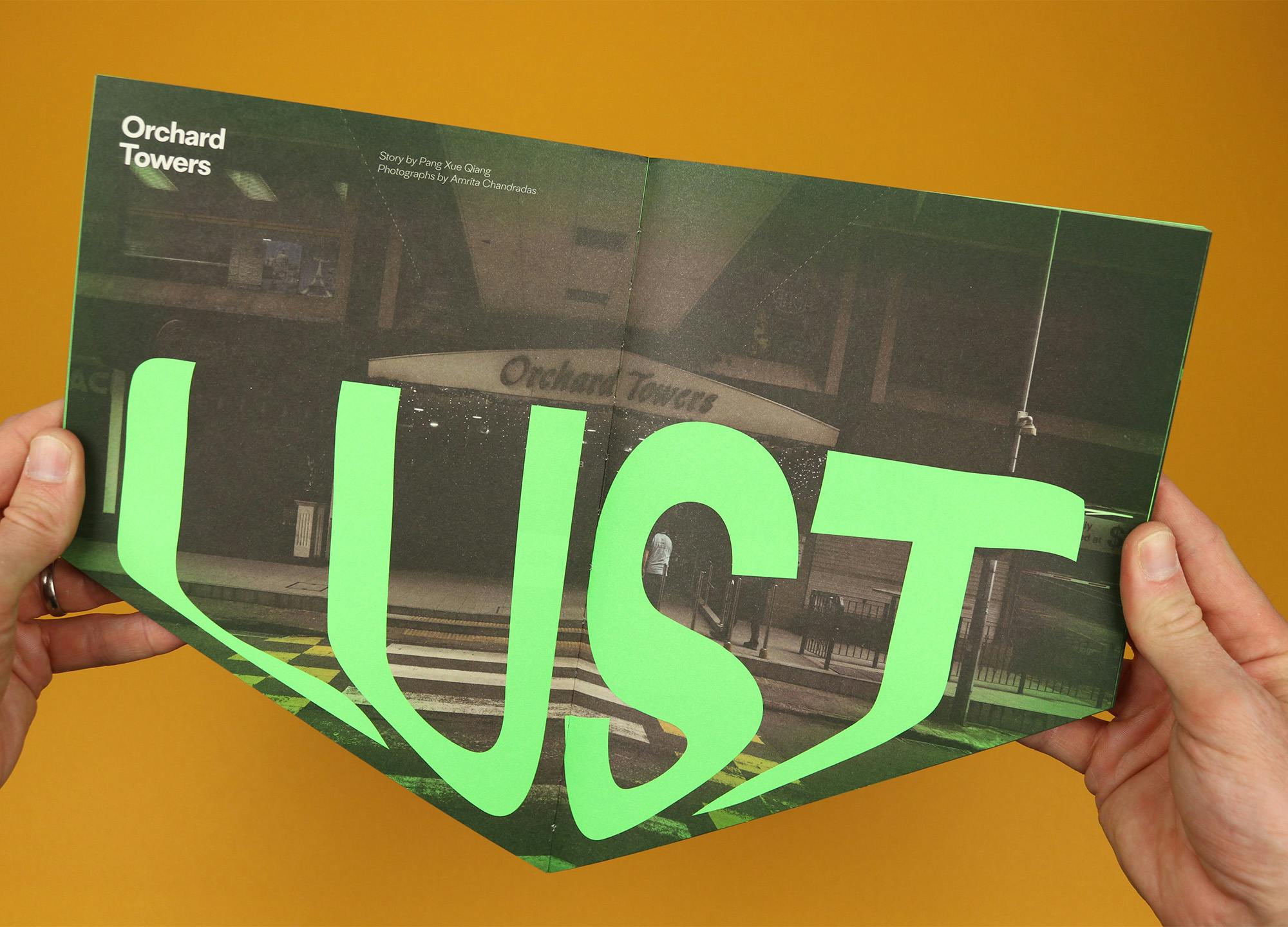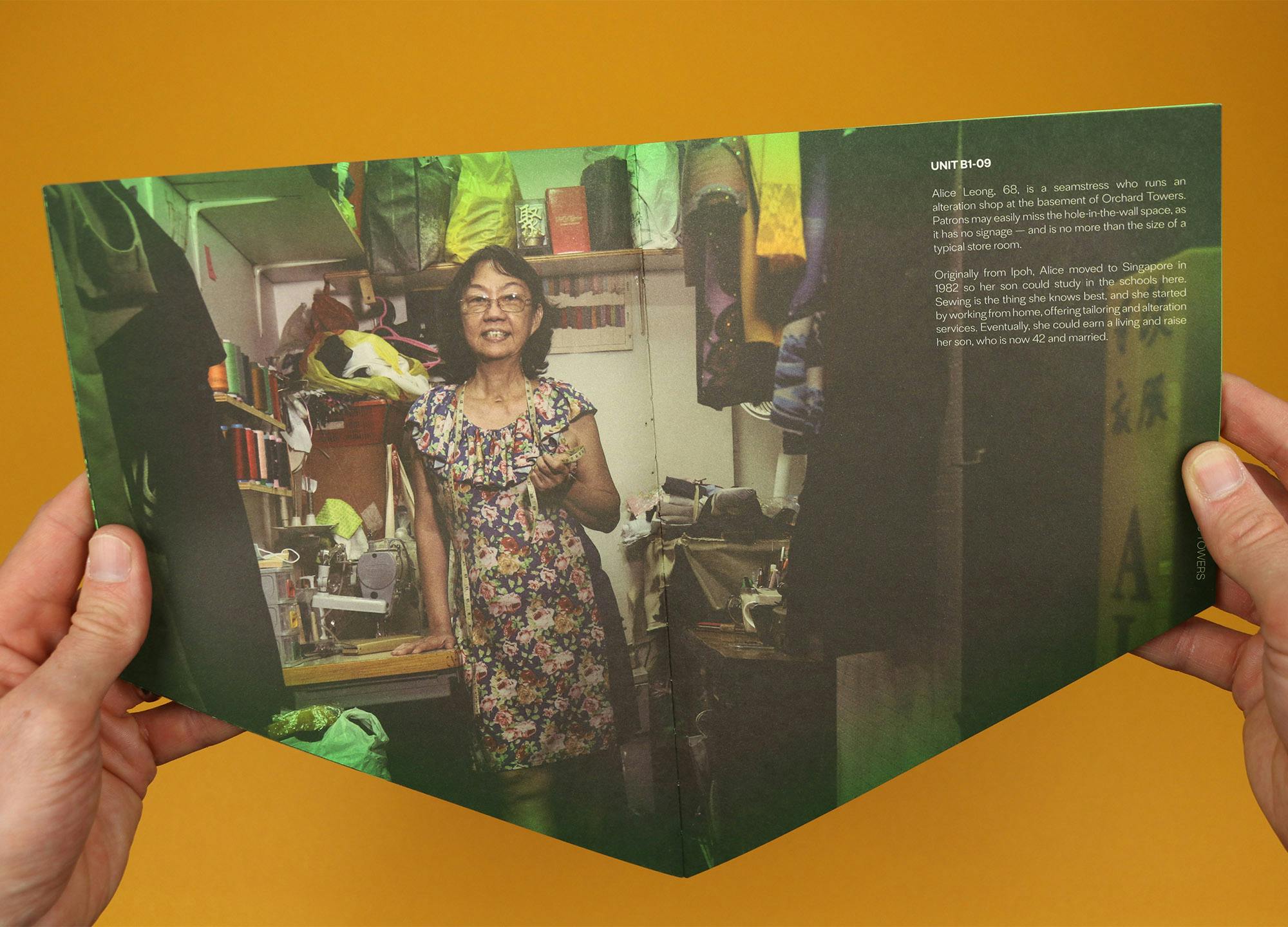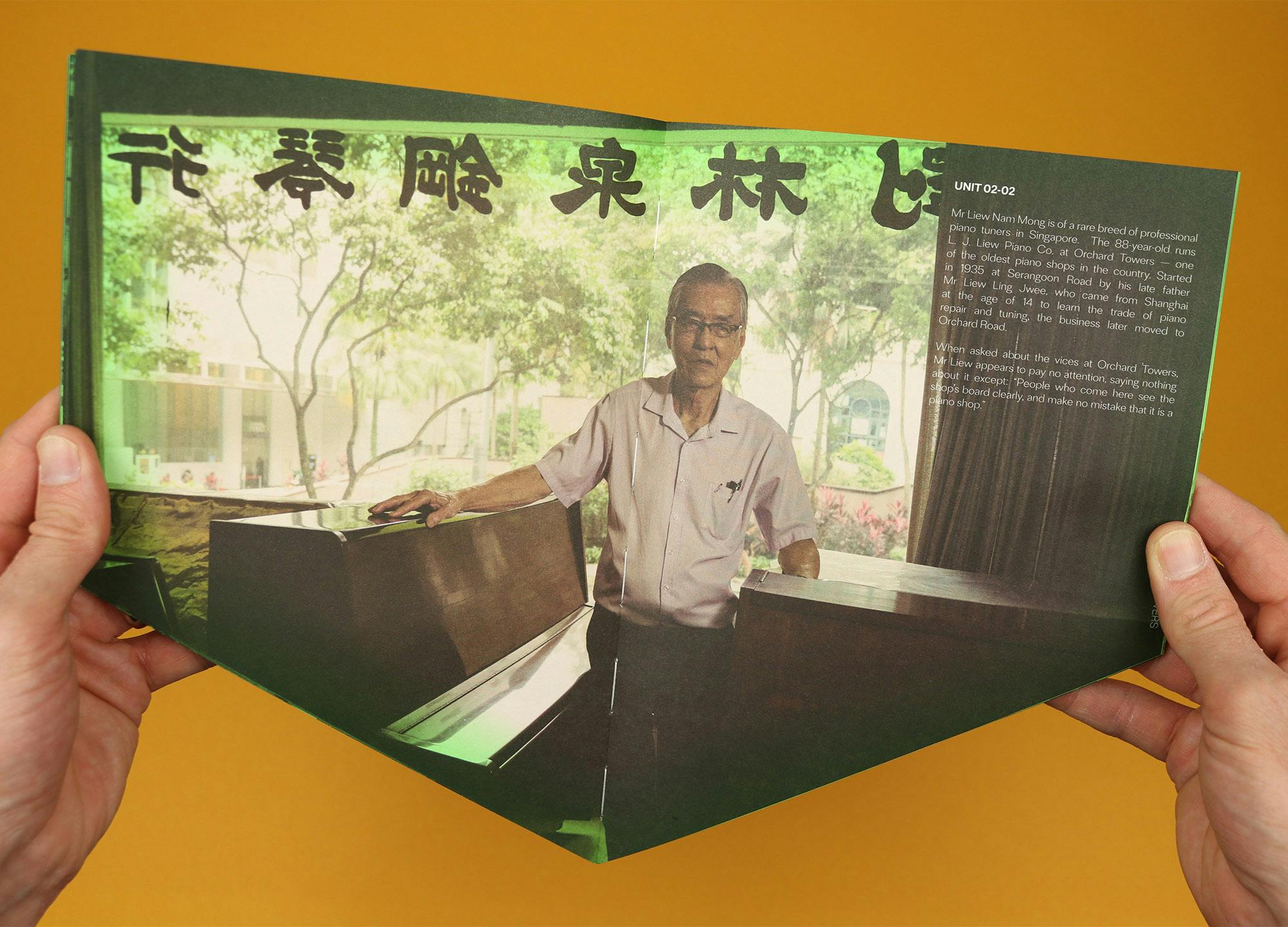Untold stories in Meantime magazine
The new issue of Meantime is themed ‘Bad Stories’, with seven sections inspired by the seven deadly sins. A corner has been sliced off the magazine, so when it’s stood on end it looks like it’s sinking, and when I first saw pictures of it online I was confused. My first assumption was that the theme had something to do with global warming and rising sea levels, but when I sat down to read the magazine another association presented itself, and I started getting obsessed by the conspicuous absence of that missing corner.
Pang Xue Qiang begins his editor’s note by acknowledging that it may seem counterintuitive for a magazine about Singapore to be structured around the seven deadly sins:
“Singapore behaves like it’s no sin city. We want to be seen as a good place: safe, peaceful and orderly. Violent crimes are extremely rare. There are strict gun laws. And drinking is banned in all public places after 10.30pm. It is easy to find plenty of ways bad behaviours are curbed here.”
If you’ve seen Meantime before this will feel familiar – it’s a beautifully charming magazine that tells personal stories about Singaporean life, while also reflecting on the history and culture of the city state. And so it follows that the ‘Bad Stories’ gathered here focus on a particularly safe type of misbehaviour: for example the section on Gluttony tells the history of Tiger beer and drops in on a bar in Malaysia that sells toddy, a traditional drink made from fermented coconut sap. There’s no hint of raucous drunkards here – we’re told that toddy got a bad reputation for being the low-wage worker’s drink of choice and a combination of government restrictions and changing tastes meant the last toddy shops in Singapore closed in 1979. (Meanwhile the Malaysian bar featured seems like a lovely, low key place to cool off for a few hours during the day.)
Similarly, the section on Envy tells the stories of “hell riders”; members of the motorcycle groups who dominated Singapore’s streets in the 1980s. But of course those riders are comfortably middle aged now and they stopped doing battle with the police decades ago – not only that, but their recollections are characterised by the camaraderie of friends riding bikes together, and the opportunities they found to raise money for charity and use their bikes for social good.
So it’s not just that these stories aren’t bad – they’re decidedly good, heartwarming tales from Singapore’s social history. And that’s where the missing corner comes in, because of course there are other stories from Singapore that are not told here. In the Lust section, for example, we’re taken to Orchard Towers, “an ageing, run-down building notorious for its sleaze. At Orchard Towers, sex shops, beauty parlours, night clubs and KTV bars dominate its space.” But instead of venturing into those places, the feature focuses on the other businesses in the building, including an optician, a seamstress and a piano tuner, who reflect on the glory days of Orchard Towers, and share bemused stories about their current neighbours.
It’s a nice idea, showing the sweet, innocent side of a notorious building, but it left me wondering about those other residents: what would it look like if Meantime also spoke to the dancers from one of the strip clubs, or the owner of a karaoke box? The missing corner, then, came to represent the stories that have been cut out of the magazine, and instead of sinking into the ground, this issue becomes the tip of the iceberg; the part that’s visible above the waterline, the version of Singapore that Meantime wants to create.
To be clear, I’m not saying that was the team’s intention when they decided to chop a corner off the magazine. (I suppose it might have been, but I don’t think it really matters either way.) And I’m not suggesting that Meantime should have told those other stories – every editor has to decide which voices they’re going to use and which they will exclude, and Pang and the team have created a warm and characterful magazine that paints a totally original picture of Singapore and its history.
I love dipping into the idiosyncratic world they conjure up each issue, and this one has made me think more about the significance of the print experiments they play with each issue. The first issue had torn pages, the second issue made use of thermochromatic ink to reveal hidden images on the cover, and the third looked like a corner had been bitten off, possibly by a tiger. On one level they’re just a bit of fun – the sort of thing the team throws in because they love working with print and they want to see what they can do with it. But on another level I think they have a deeper meaning, encouraging readers to see that the words on the page are only one part of the storytelling, and allowing for the possibility of other, untold stories.


